I was in a taxi heading to the Hydrostone neighbourhood in Halifax, curious to see the concrete-block style of house construction that was implemented here following the infamous Halifax explosion of 1917. I happened to mention the explosion to my driver as we were chatting, and was taken aback a bit by his response: a curious, “What explosion?”
I was surprised by the question, given that the Halifax Explosion was one of the greatest disasters in Canadian history. But to be fair, it turned out that my 30-something driver had only moved to Halifax several years prior, and was originally from another country. Our conversation made me realize that for several generations of Canadians and to many newcomers to these shores, the Halifax Explosion remains a completely unknown event in our history. Even I had much more to learn about this catastrophe, but having discovered that there were a few artefacts from that historic catastrophe still scattered around the city today, I was on a mission to find them.
The Largest Pre-Atomic Explosion in History
It was the morning of December 6, 1917, when two ill-fated ships found themselves on a collision course within Halifax harbour. The Norwegian SS Imo was heading out of the harbour, when the Mont-Blanc, a French cargo ship heavily laden with high explosives destined for the battlefields of World War I was entering The Narrows. Halifax was a busy port and safe haven for ships during the war years, as the harbour entrance was heavily fortified, and there were even underwater nets strung around Georges Island to keep out enemy submarines. But this morning the harbour was anything but safe.
Like a game of chicken gone very, very wrong, miscommunication between officers and pilots on both approaching ships resulted in the SS Imo colliding with the Mont-Blanc, ripping open the Mont-Blanc’s hull and creating sparks that ignited some of the flammable liquids stored on its decks. Twenty minutes later the 3000+ tons of explosives on board ship ignited, causing the largest man-made explosion to date and one of the worst disasters in Canadian history.
DID YOU KNOW? Up until the atomic bomb was dropped on Hiroshima in 1945, the severity and intensity of all other explosive events was compared to and measured against the Halifax explosion benchmark (which, as bad as it was, was only 1/5 as intense as the Hiroshima explosion). Even the inventors of the atomic bomb used Halifax to calculate the A-bomb’s potential destructive power.
A Tragedy That Left Scars for Generations
The massive explosion in Halifax harbour and resulting 9-metre tall tsunami levelled the north ends of Halifax and Dartmouth, flattening 1500 buildings and damaging another 12,000. Settlements like Africville were decimated in the blast, and the Mi’kmaq community of Turtle Grove on the Dartmouth side of the inlet was completely obliterated. The ships involved in the explosion and many others in the harbour were reduced to toothpicks, and even the weighty anchors from several of them were flung kilometres inland.
The human toll was unimaginable: almost 2,000 people died, some instantly, others more horrifically after being impaled by wreckage or trapped in burning buildings; more than 9,000 were injured, many blinded or partially blinded by shards of flying glass; and over 25,000 people were left homeless.
To add insult to injury, those that did survive had to endure a massive blizzard that blew in the next day, dropping 40 centimetres of snow on the ruins of the city and ushering in freezing temperatures that made relief efforts a challenge for days to come, blocking trains bringing in medical staff and hampering rescue efforts at the site.
No Public Commemorations of the Halifax Explosion for 50 Years
With such a traumatic loss of life and injuries in the thousands, perhaps it’s no surprise that after the first anniversary when the city held a public memorial, Haligonians preferred to put the disaster behind them. Many descendants of the survivors recall that their older relatives just refused to talk about what happened. Of course, the context in which it all took place was undoubtedly a factor as well: the years immediately preceding the disaster and afterwards were plagued by war, disease (the Spanish Flu pandemic came hot on the heels of World War I), and economic downturns that culminated in the stock market crash of 1929. Then there was the depression, and another World War. So it’s maybe not so strange that Halifax chose not to hold any public commemorations of the disaster until 1967, fifty years after the explosion took place. Time may not heal all wounds, but five decades may have helped dull some of the pain.
Searching for Pieces of the Past
Seeing Halifax harbour today, with its upscale hotels, restaurants, trendy markets and throngs of people, it’s hard to imagine the scale of the disaster that decimated this port city over a century ago.
But I had learned that there were still some of the remnants of the Halifax Explosion around the city, including a few significant bits and pieces from those doomed ships, and I had decided to see them for myself.
Which brings me back to why I was chatting with my taxi driver about the Explosion en route to the Hydrostone District. This English-style suburb of row houses was part of the rebuilding of Halifax’s North End and was Canada’s first planned community, completed in 1920 to help house the displaced survivors of the blast. Many of these people were still leery of moving into houses constructed of wood, having seen so many destroyed by fire after the last, so ‘hydrostone’ was a more reassuring material: a safer, stronger material than wood, and more resistant to fire, these compressed-concrete blocks may not have been beautiful, but the planned neighbourhoods themselves were, with wide boulevards divided by leafy medians in the middle.
The best example of this original community can be seen today at the Hydrostone Market, a charming street where there is a small collection of retail shops, artisan boutiques and cafes with a parkette just opposite them.
Chasing the Anchors from the Halifax Explosion
My next destination was the location of the anchor of the Mont-Blanc herself, or at least the 1140-pound shaft of it which had been flung 4 kilometres inland before coming to rest on what was at the time the Edmonds Ground Estate. Today this area is a residential neighbourhood where you’ll find the anchor shaft on display on a little patch of green at 110 Spinnaker Drive, mounted on a small pedestal with a plaque identifying what it is.
This neighbourhood has been redeveloped completely over the past century, so this isn’t the original location where the anchor landed following the explosion, but it was close enough to give me a sense of the distance it flew and the force required to lob such a substantial piece of heavy metal.
With shrapnel this large falling from the sky, raging fires sweeping through what buildings were left standing, and toxic fumes filling the air, it must have felt to the surviving residents like the war had indeed come to Canada’s shores.
A Fluke of a Discovery
Across the harbour from Halifax is another fragment of the explosion believed to be from one of the ships involved in the 1917 collision: an anchor fluke. It forms part of a garden seat that has been on Katy Jean’s family’s waterfront property in the Burnside area of Dartmouth for decades. When Jean’s grandfather bought the property in the 1940s, they learned that the previous owner had made a concrete chair and embedded the anchor fluke into the seat as its backrest.
The family believes (and other experts who have examined it agree) that the chair was made with debris from the Halifax Explosion, although the anchor fluke hasn’t officially been identified as coming from any particular ship. And since the family property was sold in 2018 along with the chair, the fate of the anchor chair may remain as much a mystery as its origins.
A Melted Cannon Monument in Dartmouth
While the provenance of the anchor/chair may not have been confirmed, Dartmouth does hold another bonafide remnant of the Mont-Blanc, this time a cannon from the ship. The cannon itself isn’t very large, and the monument at 171 Albro Lake street is equally modest, with only a couple of supports holding the cannon and a few plaques indicating its importance.
The cannon is impressive nonetheless because of one characteristic: the metal was obviously super-heated in the 5000-degree Celsius explosion, so much so that the shaft of the cannon has visibly melted. That alone is enough to speak volumes about the heat generated in the cataclysm, never mind the distance that this 1200-pound metal missile flew (5.6 kilometres!) before landing here.
The Halifax Explosion: Marking a Moment in Time
For decades after the explosion, Haligonians chose not to relive this horrific moment in their history as it was simply too painful to revisit. But that has changed with later generations, and there has been an effort to mark the event with more than just cannon and anchor fragments. In 1985, the Halifax Explosion Memorial Bell Tower was installed and included a time capsule of artifacts from 1917 which was reopened five years ago to commemmorate the 100th anniversary of the disaster, on December 6, 2017.
NOTE: The 100th anniversary of the Halifax Explosion was also commemorated nationally with a stamp showing a scene of the two ships colliding and the front page headline of the Halifax Herald. (image is at the top of this post)
And one place in Halifax that will always mark the moment of the Halifax Explosion is City Hall – to the minute, in fact. In 1999, when the clock was replaced in the tower here, one of the two clock faces was permanently set to the exact time of the explosion that occurred here on December 6, 1917: 9:04am (and 35 seconds).
Bigger Than the Titanic
It’s strange to think that the sinking of the Titanic occurred only five years before the Halifax Explosion. Strange because, while everyone has heard of The Titanic, (and not just because of the movie), there are still many people like my taxi driver – generations of people likely – who don’t know much about this catastrophic Canadian disaster. It was bigger than the Titanic when it comes to loss of life, more destructive in terms of damage, and so traumatic that many survivors refused to even talk about it for decades.
Maybe this is what motivated me to look for these remnants of that famous explosion: so that more people would talk about it, and remember the Halifax Explosion for what it was: a fascinating – if horrifically tragic – part of Canadian history.
TIP: If you want to learn more about the Halifax Explosion and you are visiting Halifax, The Maritime Museum of the Atlantic in Halifax is a good place to start with their “Explosion in The Narrows” permanent exhibit. There are many personal items from victims as well as other pieces of twisted metal from the ships. Or check out one of several documentaries on the subject, or the Canadian television mini-series that dramatizes the event called Shattered City.


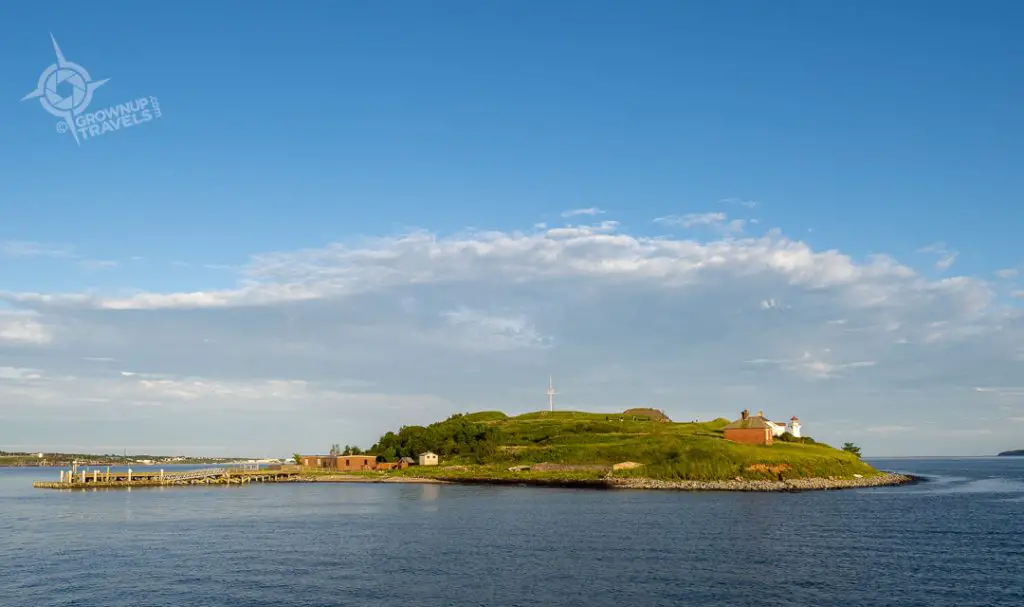
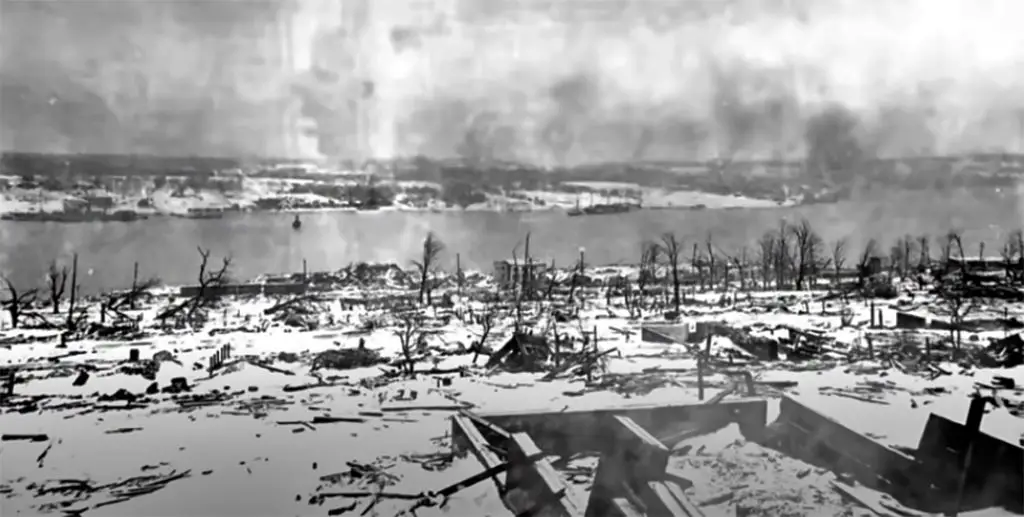
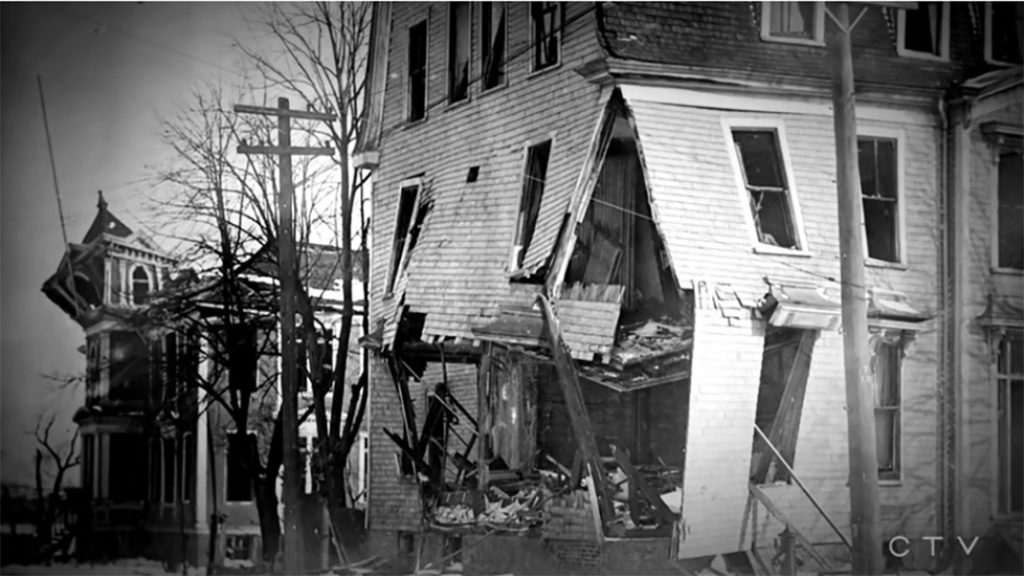
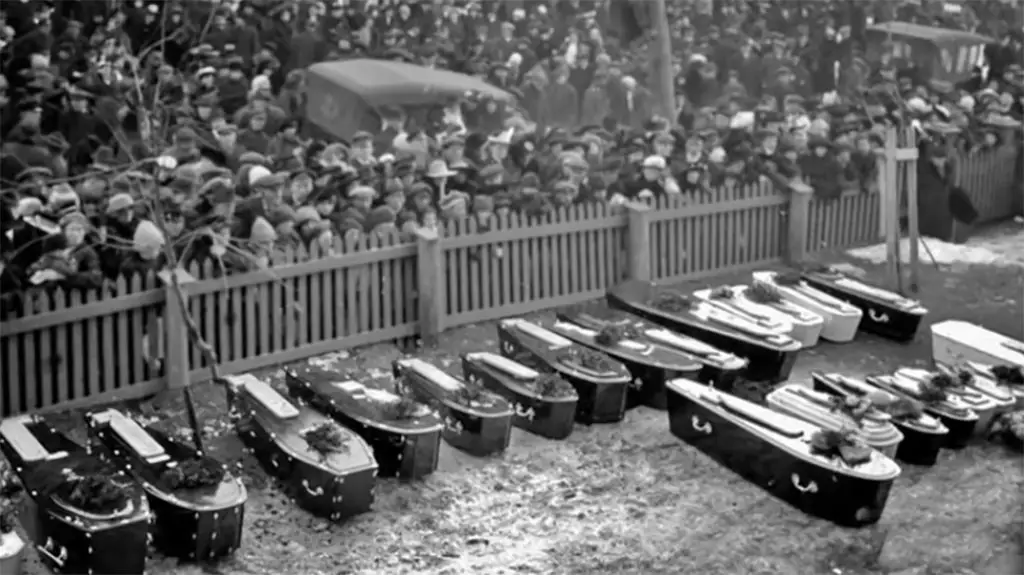
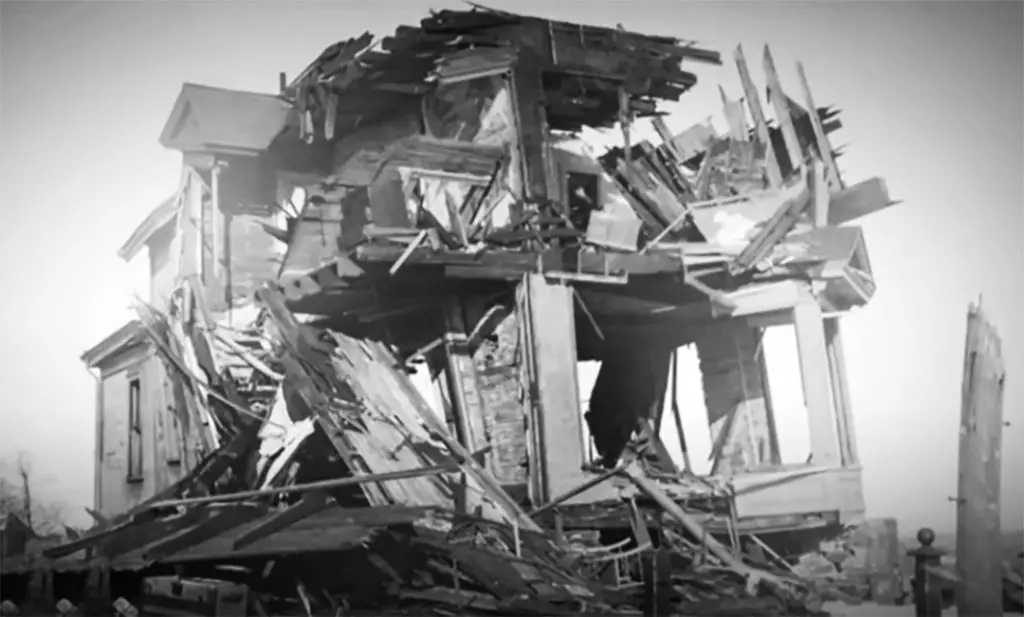
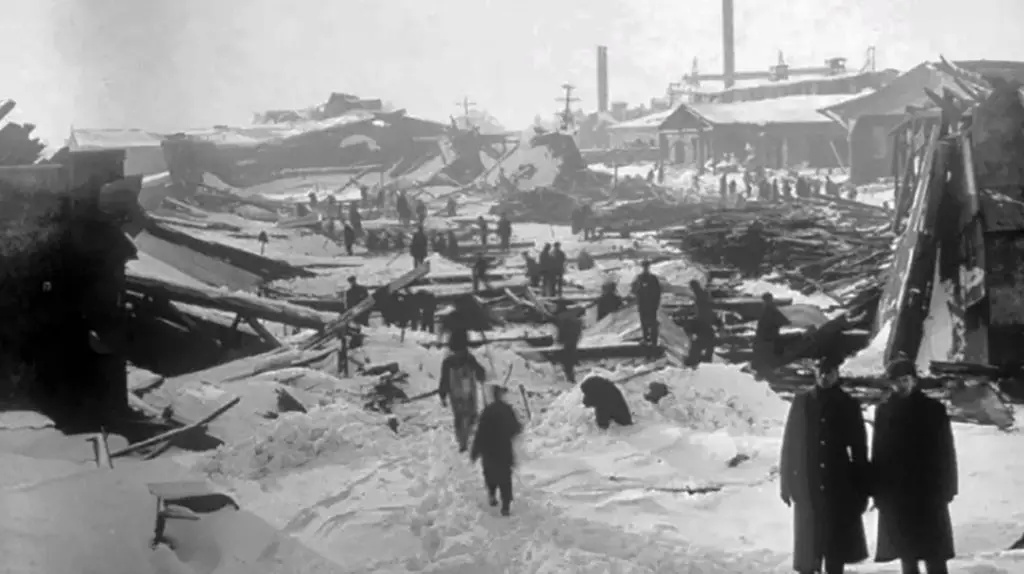



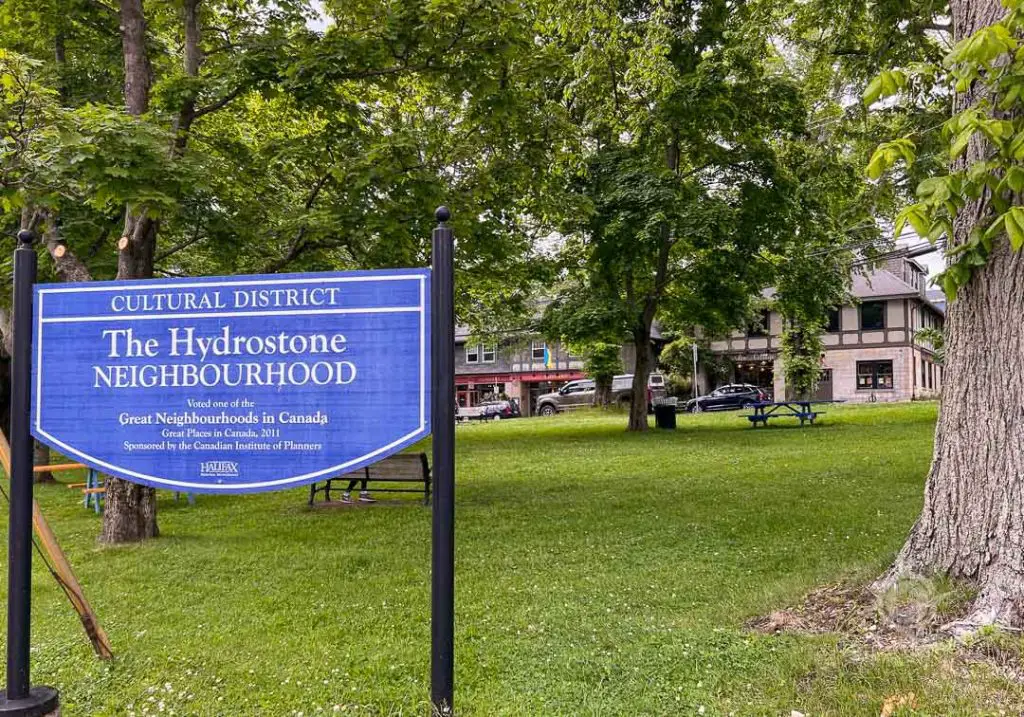
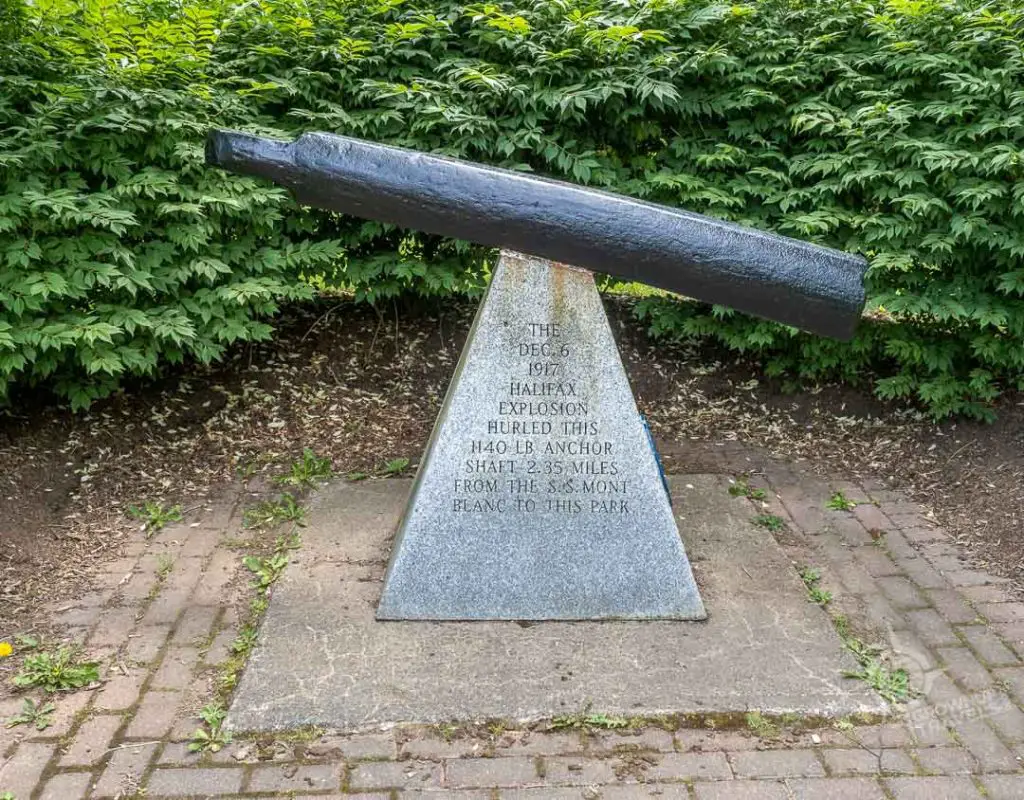
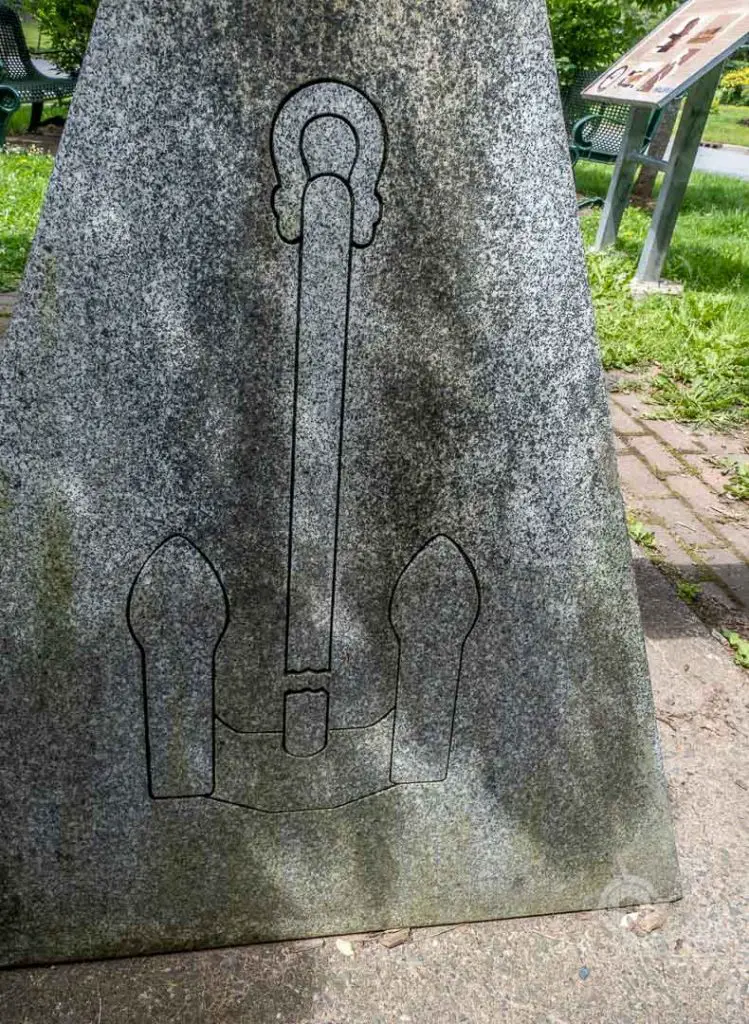
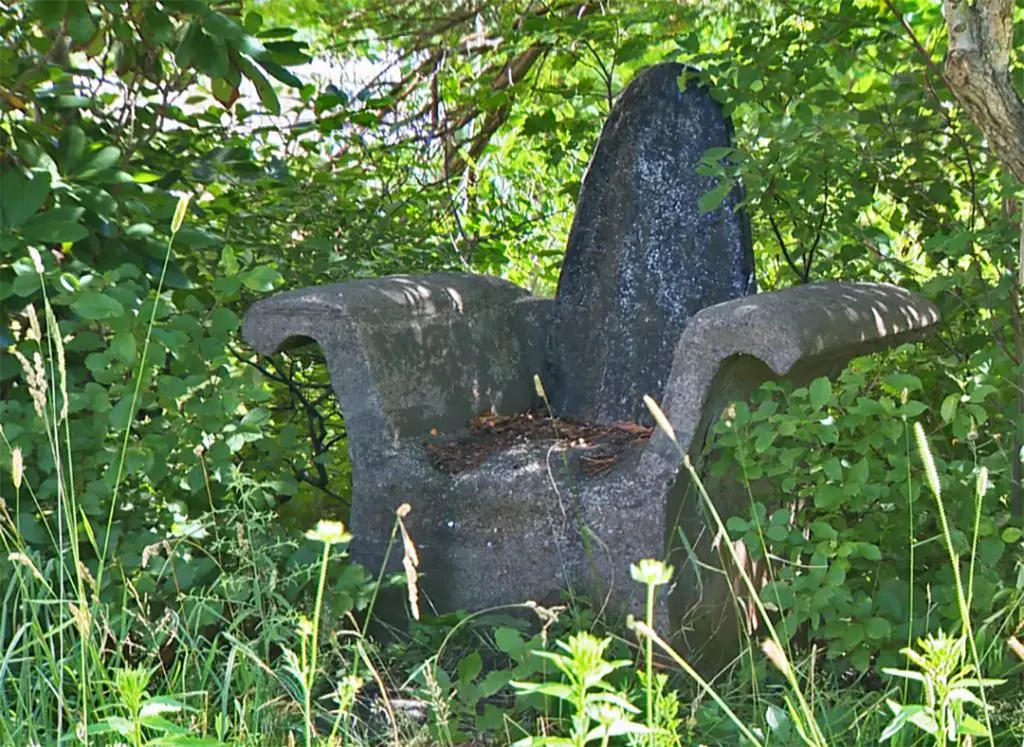
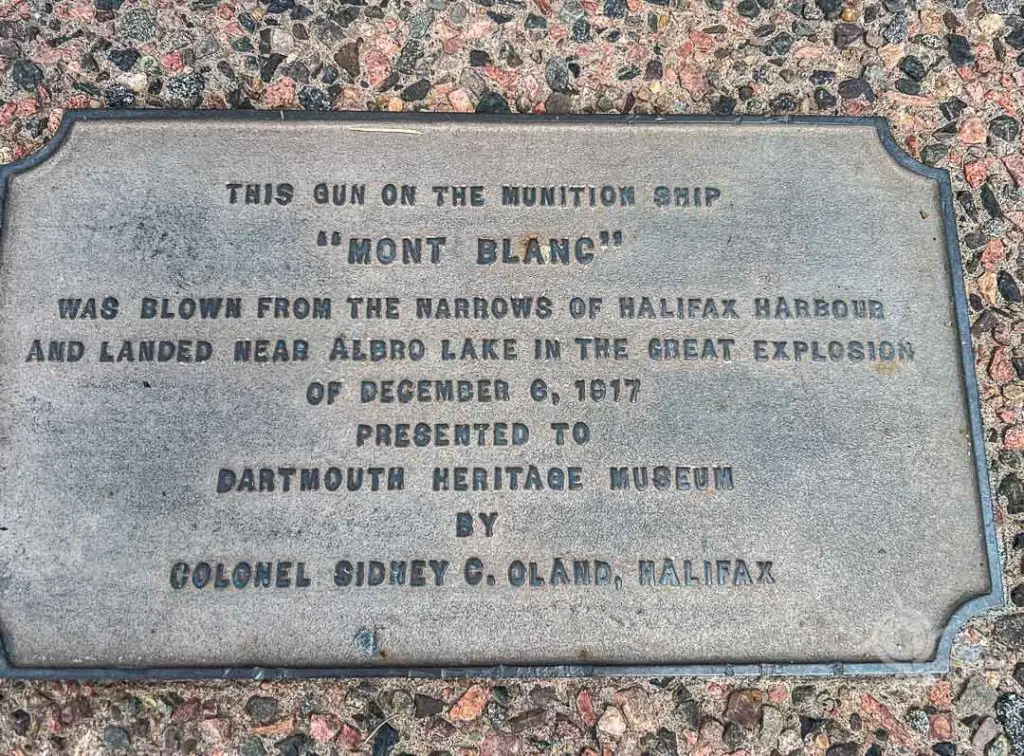
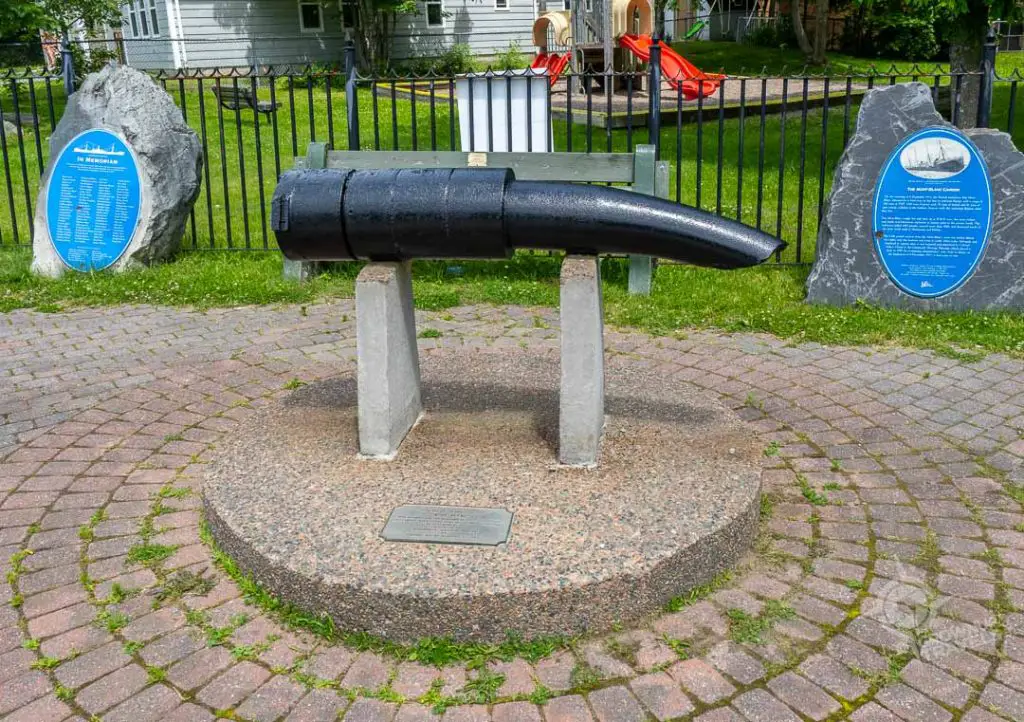
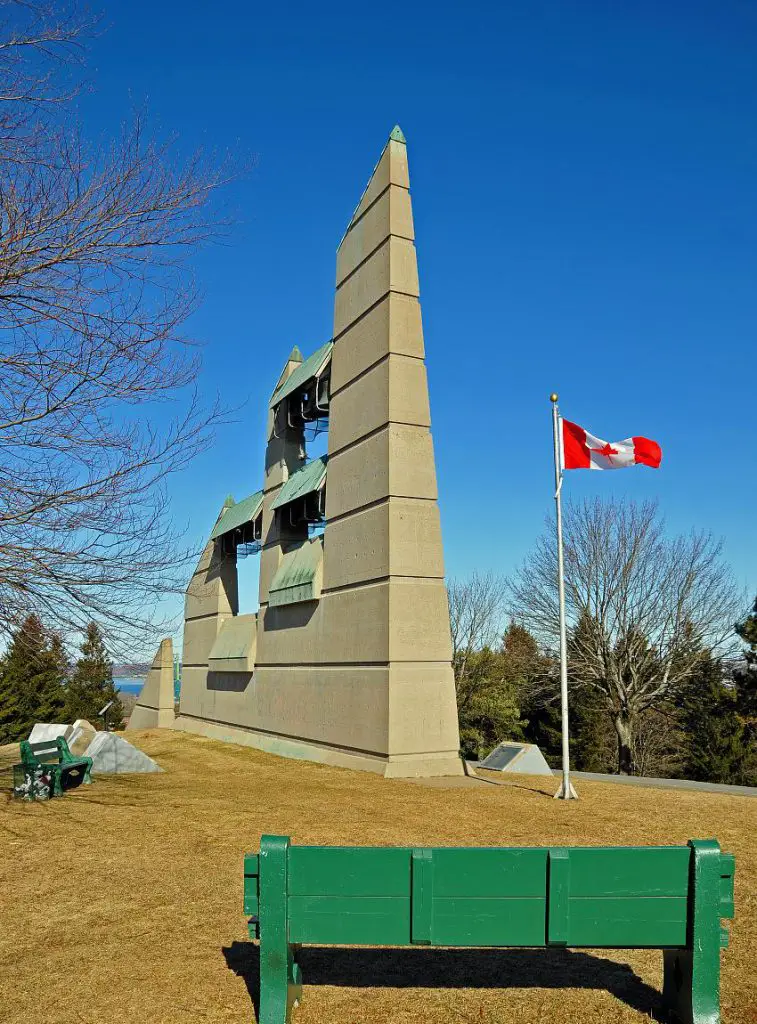
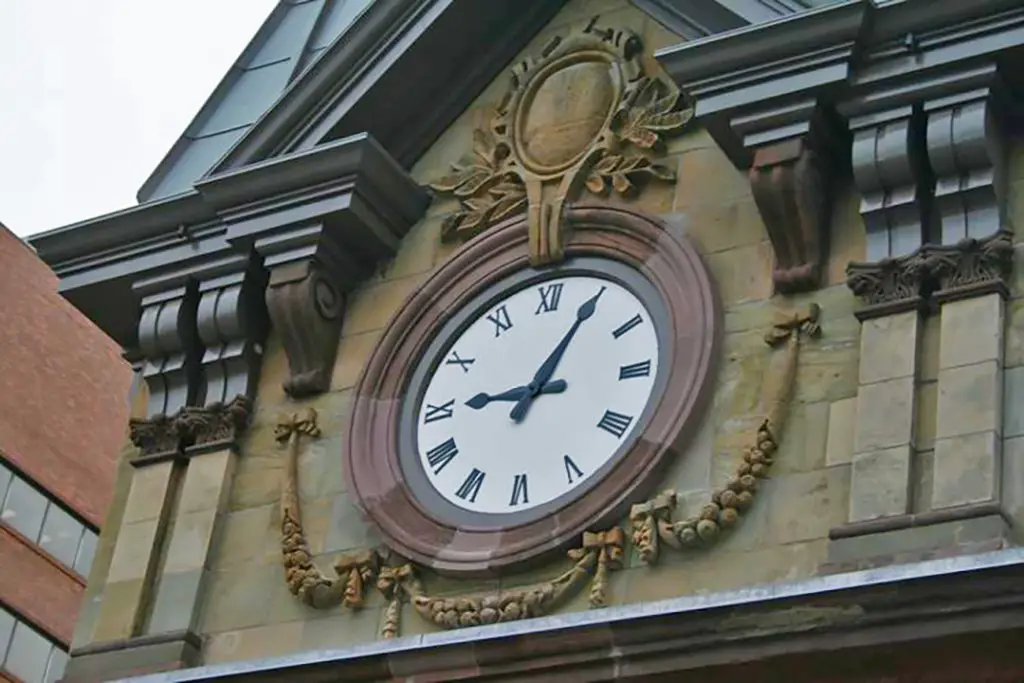












Subscribe and you'll never miss an update!
Join our mailing list to receive the latest news and updates from Grownup Travels. (We keep your email STRICTLY private)
Thank you for subscribing to Grownup Travels!